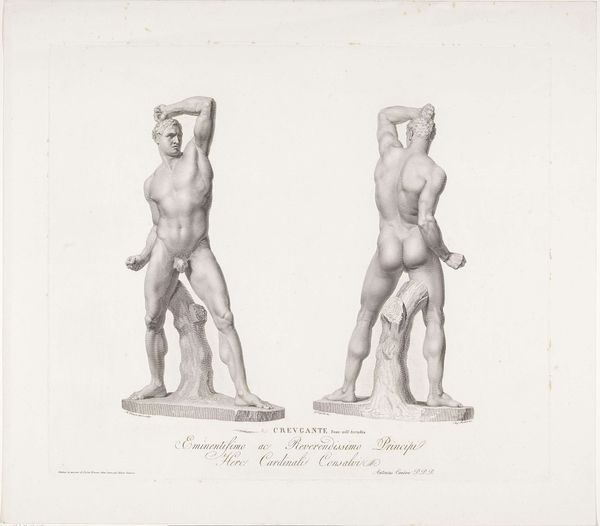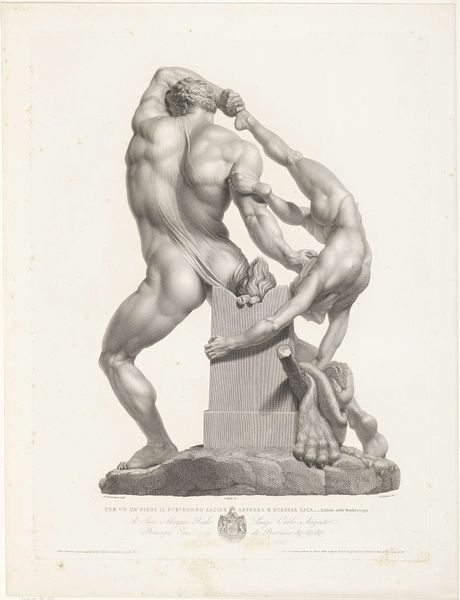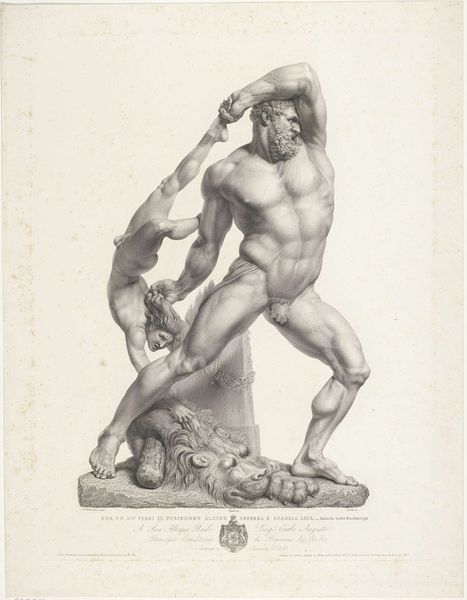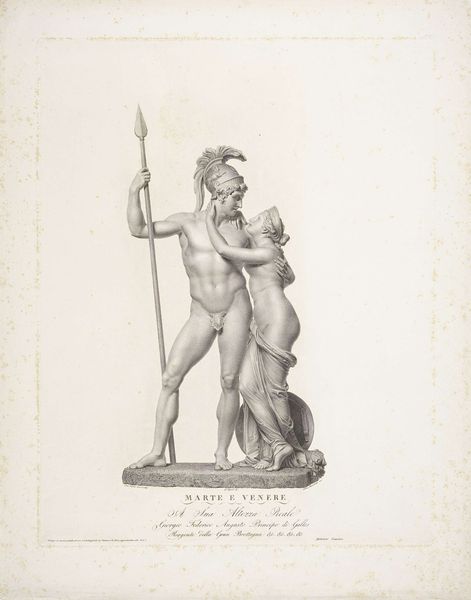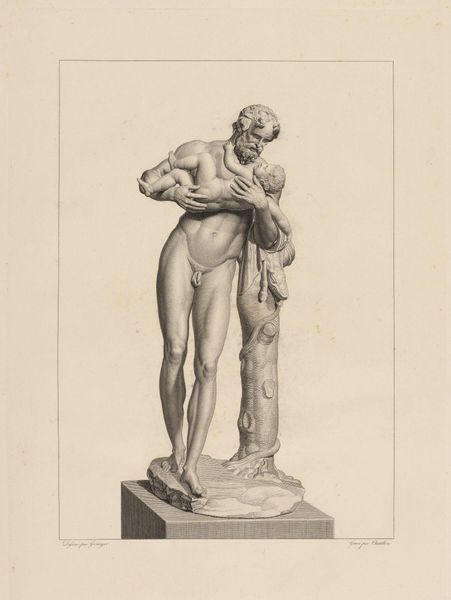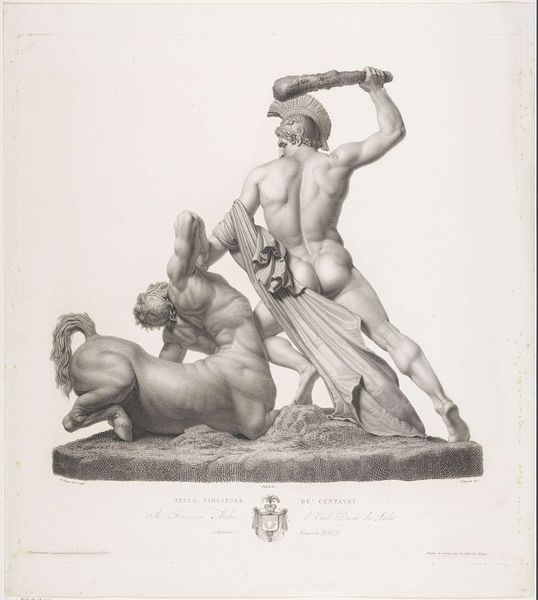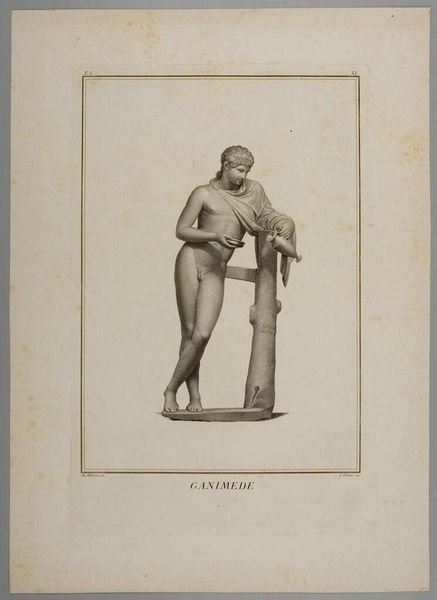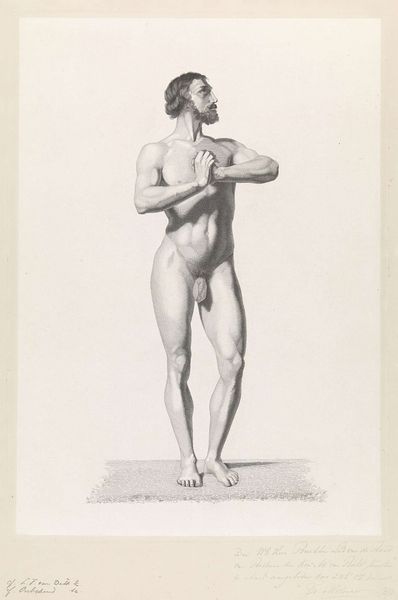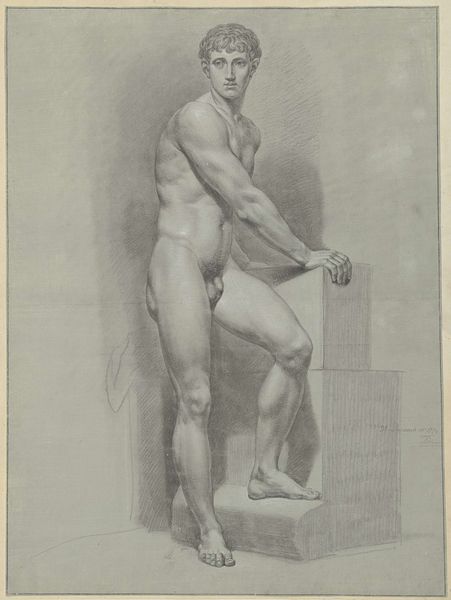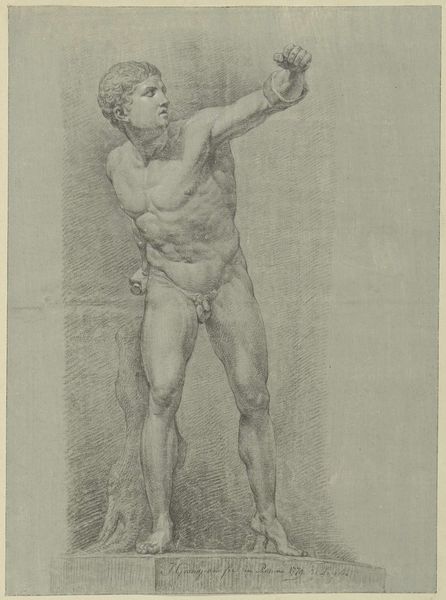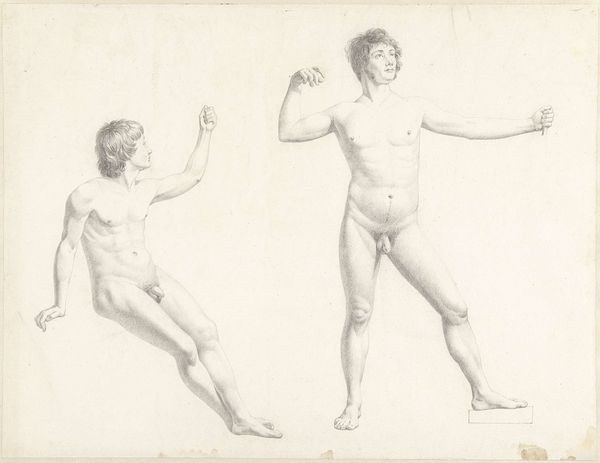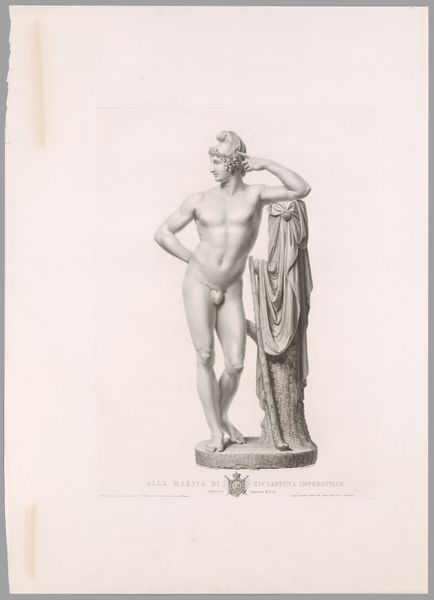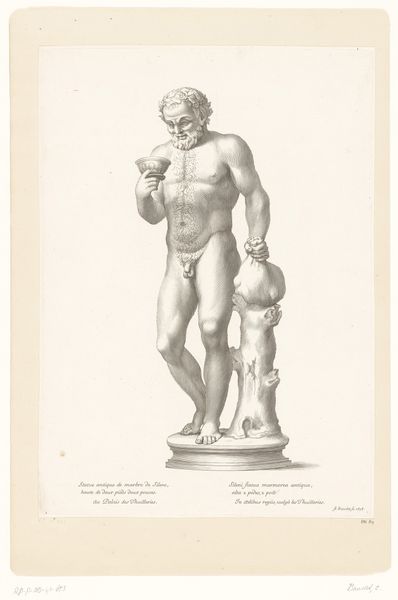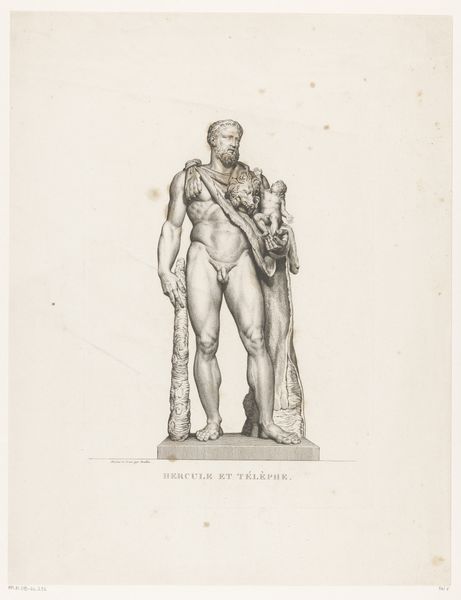
drawing, pencil
#
portrait
#
pencil drawn
#
drawing
#
neoclassicism
#
pencil sketch
#
charcoal drawing
#
pencil drawing
#
pencil
#
portrait drawing
#
history-painting
#
academic-art
Dimensions: height 464 mm, width 535 mm
Copyright: Rijks Museum: Open Domain
Editor: This drawing, "Damosseno," artist Pietro Fontana, made sometime between 1772 and 1837, is really striking. It’s a pencil drawing of a muscular figure from two angles. It almost feels like a study for a sculpture, perhaps intended to evoke a powerful, almost classical, ideal. What can you tell me about it? Curator: What catches your eye, initially? Is it the muscles, the pose, or something else? I see echoes of ancient athletic ideals. Notice the boxer’s stance and consider boxing's symbolic significance – strength, endurance, and the struggle for dominance. This imagery connects us back to ancient gladiatorial combat. Editor: I definitely see what you mean about connecting back to the gladiators! The muscles stand out, yes, but also how much detail he included using just pencil. Why two perspectives of the same figure? Curator: Good eye. The multiple perspectives suggest a desire to fully understand and represent the ideal human form from all angles. It emphasizes volume and depth, like ancient Roman sculpture that demanded a complete understanding. It invites the viewer to engage more deeply with the presented figure, to reflect on its wholeness and the many facets of heroic identity. How might this drawing’s message change without the twin presentation? Editor: Interesting. Without both perspectives, we wouldn't get that sense of wholeness. Now, seeing the back, I also notice that one of his fists is covered but the other one is bare. Is that significant? Curator: The hand coverings! The wrapped fist might indicate preparation or training, or perhaps this Damosseno has already sustained battle wounds. Think about the dichotomy of the vulnerable hand vs the bandaged one. Consider its psychological implications in relation to ideas of protection, and the willingness to confront and overcome adversity. Editor: So, even a drawing can use symbolism in interesting ways! This was insightful - I will have to think more about that when looking at portraits! Curator: Absolutely! The dialogue between surface and symbol, the seen and the unseen, truly enriches our experience of this drawing. There are stories everywhere around us!
Comments
No comments
Be the first to comment and join the conversation on the ultimate creative platform.
